Are you interested in using Chat GPT in your projects? If so, you’ve come to the right article. in the last few months, chatbot users get hiked to use it. And I’m going to share a Chat GPT Command Prompt list that you can use and act like a pro.
So, basically, Chat GPT is a type of artificial intelligence that is designed to generate human-like text based on a pre-trained model. It’s an incredibly powerful tool that can be used for tasks such as chatbots, content generation, and language translation.
But how do you go about using Chat GPT in your projects? One way is through the command prompt, also known as the command-line interface (CLI). The command prompt allows you to input and executes commands on a computer, making it a powerful tool for running Chat GPT commands.
In this article, we’ll go over the basics of Chat GPT and the command prompt, as well as some tips for using Chat GPT commands in the command prompt. So if you’re ready to take your Chat GPT skills to the next level, keep reading!
Have you ever interacted with a chatbot that seemed so human-like that you forgot it was a machine? Chances are, you were interacting with a chat GPT (Generative Pre-trained Transformer).
Read here: Get Free Docker Hosting From Kamatera – $100 Free Credit
Overview of the Chat GPT command prompt and its importance
So, how do you go about using chat GPT in your projects? One way is through the command prompt, the command-line interface (CLI).
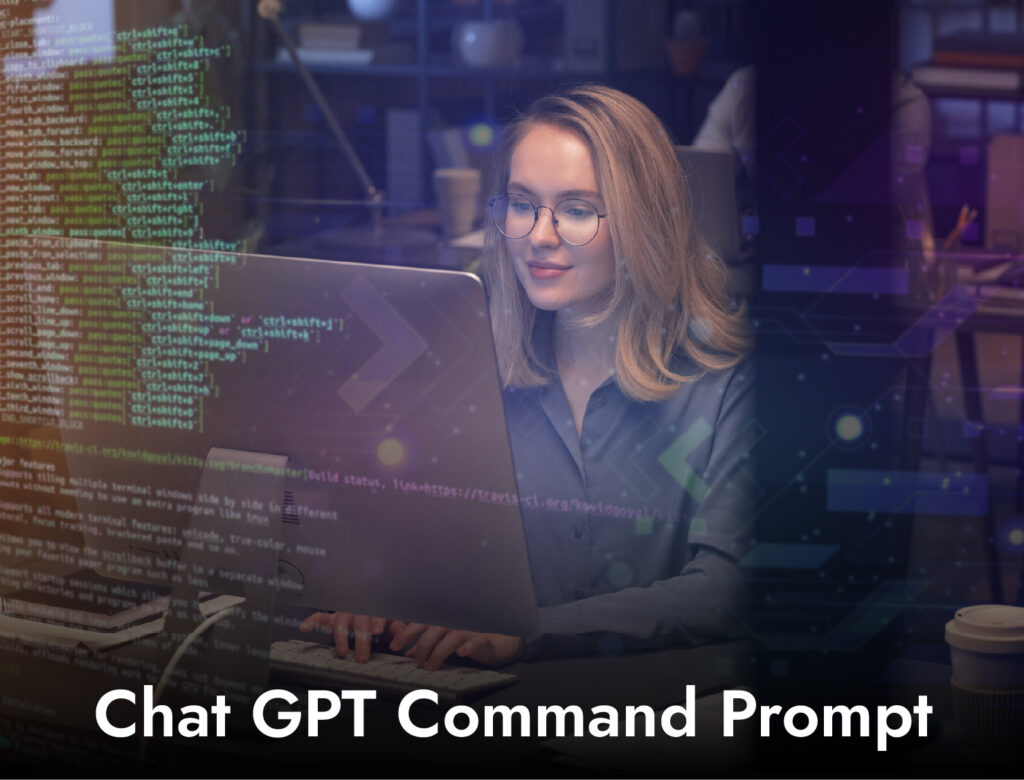
The command prompt is a text-based interface that allows users to input and execute commands on a computer. It is a powerful tool that can perform a wide range of tasks, including running GPT commands.
Using the command prompt to run GPT commands offers several benefits. For one, it allows users to automate tasks and create scripts that can be run multiple times with minimal effort.
Additionally, the command prompt provides high control and flexibility, allowing users to customize their GPT models and fine-tune their performance.
Read Also: How to Get Totally Free Domain Without Hosting?
Chat GPT command prompt list
Here is a list of chat GPT (Generative Pre-trained Transformer) commands that can be used in the command prompt:
Tips for using GPT commands in the command prompt
Now that we’ve covered the basics of chat GPT and the command prompt let’s dive into some tips for using GPT commands in the command prompt.
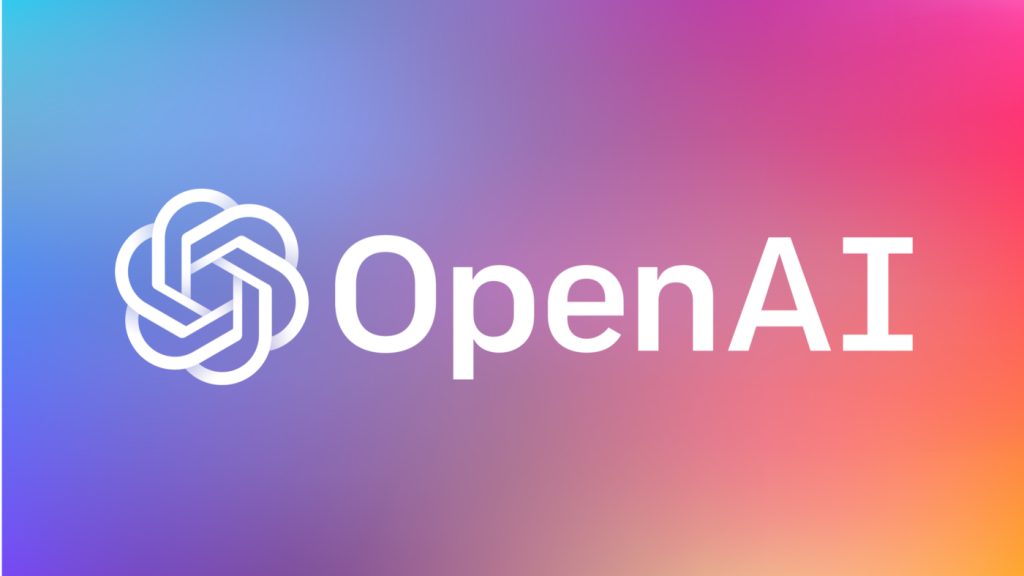
First, ensure you have the necessary dependencies installed on your system. This typically includes the transformers library, which provides access to a wide range of GPT models and tools.
Next, familiarize yourself with the various GPT commands that are available. Some common ones include, which trains a GPT model on a dataset, and which generates text using a pre-trained model. You can find a full list of GPT commands by running the gpt --help command in the command prompt.
Another tip is to use configuration files to customize the behaviour of your GPT model. These files allow you to specify settings such as the number of layers and attention heads, the learning rate, and the type of optimizer to use.
Finally, don’t be afraid to experiment and try different configurations to see what works best for your particular use case. As with any machine learning project, it’s all about finding the right balance between complexity and performance.
Use ChatGPt Like Pro As Unlimited Article Generator
ChatGPT Command for “Make New Article Structure”
Make a list of 10 important headings for an article on a topic: topic name
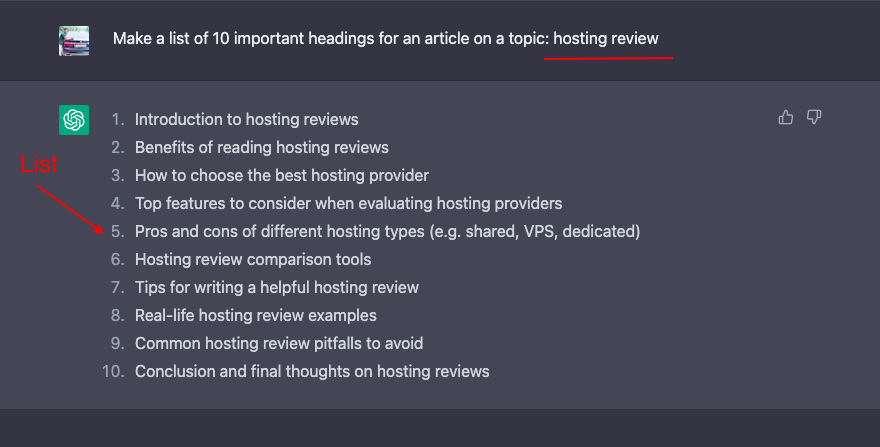
ChatGPT Command for “Blog Title Generator”
Generate some catchy titles to get good CTR for the topic named: Topic Name
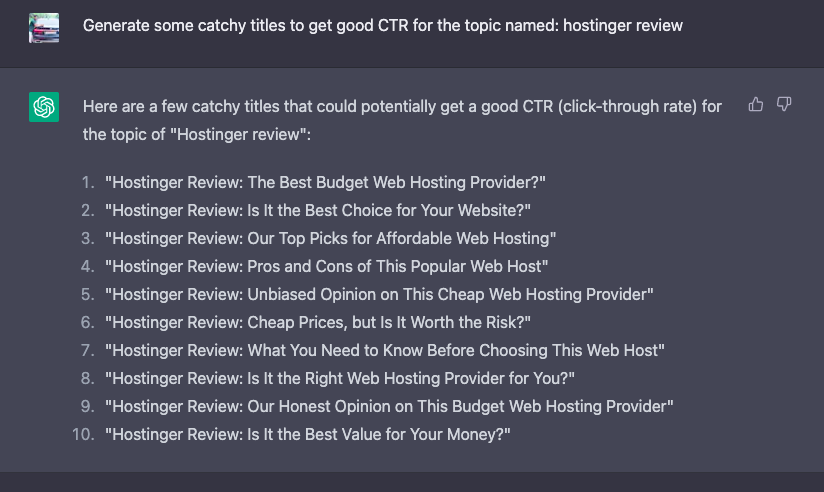
ChatGPT Command for “Blog Meta Description”
Generate some catchy blog meta descriptions to get good CTR for the topic named: Topic name
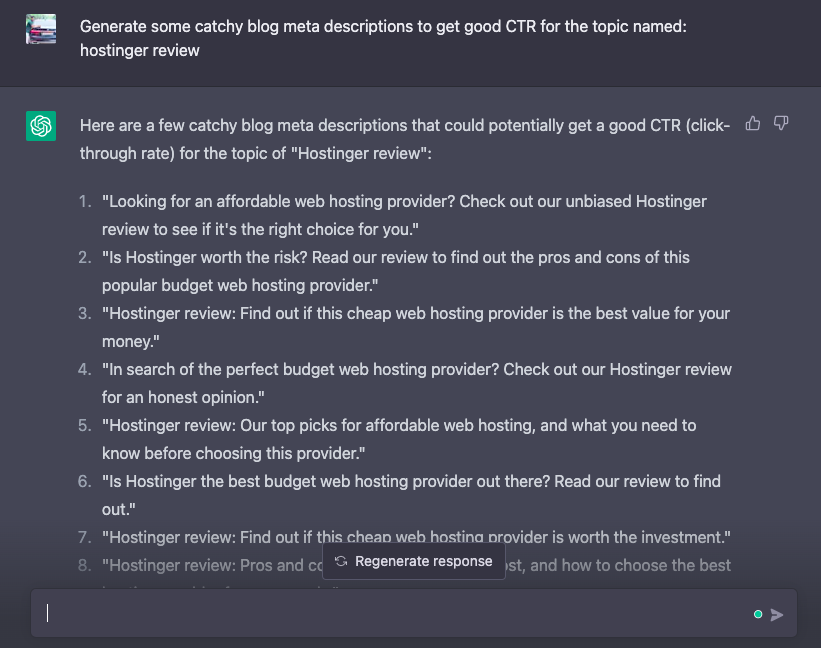
Best 20 Ways to Use ChatGPT for SEO
Generate long-tail keywords for your website using ChatGPT
Prompt: “Generate 10 long-tail keywords for a website about organic skincare”
Research and write compelling meta descriptions for your website using ChatGPT.
Prompt: “Write a meta description for a page on our website about our organic skincare products”
Create unique and engaging titles for blog posts using ChatGPT.
Prompt: “Generate 10 potential titles for a blog post about the benefits of using organic skincare products”
Generate ideas for new content for your website using ChatGPT.
Prompt: “Give me 10 ideas for new content for a website about organic skincare”
Write SEO-optimized product descriptions using ChatGPT.
Prompt: “Write a product description for an organic skincare serum that is optimized for SEO”
Research and write SEO-optimized alt text for images on your website using ChatGPT.
Prompt: “Write alt text for an image of an organic skincare serum”
Generate internal linking suggestions for your website using ChatGPT.
Prompt: “Give me 10 internal linking suggestions for a website about organic skincare”
Prompt: “Generate 10 potential headlines for a social media post promoting our organic skincare products”
Research and write SEO-optimized captions for Instagram posts using ChatGPT.
Prompt: “Write a caption for an Instagram post featuring our organic skincare serum”
Generate ideas for new website pages using ChatGPT.
Prompt: “Give me 10 ideas for new pages for a website about organic skincare”
Write SEO-optimized email subject lines using ChatGPT.
Prompt: “Generate 10 potential email subject lines for a promotional email about our organic skincare products”
Research and write SEO-optimized product reviews using ChatGPT.
Prompt: “Write a review for our organic skincare serum that is optimized for SEO”
Generate ideas for new blog post series using ChatGPT.
Prompt: “Give me 10 ideas for a series of blog posts about organic skincare”
Write SEO-optimized product descriptions for e-commerce websites using ChatGPT.
Prompt: “Write a product description for an organic skincare serum that is optimized for an e-commerce website”
Research and write SEO-optimized descriptions for YouTube videos using ChatGPT.
Prompt: “Write a description for a YouTube video about the benefits of using organic skincare products”
Prompt: “Give me 10 ideas for a social media campaign promoting our organic skincare products”
Write SEO-optimized descriptions for Pinterest pins using ChatGPT.
Prompt: “Write a description for a Pinterest pin featuring our organic skincare serum”
Research and write SEO-optimized descriptions for podcasts using ChatGPT.
Prompt: “Write a description for a podcast episode about the benefits of using organic skincare products”
Generate ideas for new email marketing campaigns using ChatGPT
Prompt: “Give me 10 ideas for an email marketing campaign promoting our organic skincare products”
Write SEO-optimized descriptions for LinkedIn posts using ChatGPT.
Prompt: “Write a description for a LinkedIn post promoting our organic skincare products”
Conclusion
In conclusion, chat GPT and the command prompt are powerful tools that can be used for various tasks related to artificial intelligence and natural language processing. By familiarizing yourself with common GPT commands and following best practices, you can effectively use chat GPT in the command prompt to achieve your desired results.
One real-life example of the benefits of chat GPT is customer service. Imagine a chatbot that can understand and respond to customer inquiries in a natural, human-like manner. Not only does this improve the customer experience, but it also frees up time for human customer service agents to focus on more complex issues.
Another example is content creation, where chat GPT can generate high-quality, coherent text for blog posts, articles, and other written materials.
Most Loved Article List







